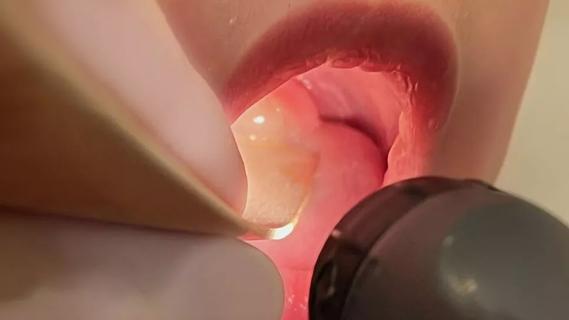With a wide scope of skills, comprehensive otolaryngologists care for patients of all ages in the community
As section head of Comprehensive Otolaryngology at Cleveland Clinic, Kyra Osborne, MD, refers to her team as “the community ENTs.” Trained in both medicine and surgery, the clinicians treat a variety of diseases of the ear, nose and throat and associated structures of the head and neck.
Advertisement
Cleveland Clinic is a non-profit academic medical center. Advertising on our site helps support our mission. We do not endorse non-Cleveland Clinic products or services. Policy
“We can take care of most ENT problems, most head and neck problems, and continue that care with the patient and not have to refer to someone else,” says Dr. Osborne. “Most times we can be the point person for them – to be their otolaryngologist – and continue their care because a lot of these people need to be followed for sometimes years.”
In a recent episode of Cleveland Clinic’s Head and Neck Innovations podcast, Dr. Osborne talks about comprehensive otolaryngology, including:
Click the podcast player above to listen to the episode now, or read on for a short edited excerpt. Check out more Head and Neck Innovations episodes at clevelandclinic.org/podcasts/head-and-neck-innovations or wherever you get your podcasts.
Podcast host Paul Bryson, MD, MBA: Can you explain a little bit about your comprehensive otolaryngology group – what types of procedures you and they perform?
Dr. Osborne: Absolutely. We are lucky to work at a wonderful place like the Cleveland Clinic and to be able to give care to the community. That's what our group kind of wants to do. We want to take care of northeast Ohio and the surrounding area, and we have about 10 surgeons in our group. We also collaborate with many of our APPs that see patients and then refer to us for surgery or other kinds of more complicated care, which is really nice to be able to collaborate with them.
Advertisement
We see adult and pediatric patients. We really kind of span the breadth of otolaryngology, which is why most of us went into it. We decided not to do a fellowship because we wanted to do the many procedures that we can do in head and neck surgery. We do bread and butter, so tubes, tonsils for kids, septoplasty, sinus surgery, even some micro laryngoscopy surgeries and some in-office procedures, which are great to be able to provide to patients.
A few of us have little niches that we've kind of developed, so one of our newer hires has a niche in otology. He's worked and collaborated with our otology section to be able to do some of the cases that he wants to do with that, so tympanoplasty and other tympanic mastoids, things like that.
I have kind of developed a niche in doing Eustachian tube dilation. It's been something I started probably about six or seven years ago, and that's really developed over the years. To be able to provide that care for patients is great because for so long we had nothing to offer except essentially putting an ear tube in. For someone that has chronic serous otitis media that's had multiple sets of tubes, you kind of got to the point where it's just like, “OK, we're going to put another tube in.” But now we have this technology that we've been able to use to fix the other side of things with the Eustachian tube problem itself. So, that's really nice to be able to deliver that care.
Advertisement
Advertisement

Surprising X-ray results explain a snoring sound heard during breathing

Prompt surgery was necessary when symptoms drastically increased

Specialists are increasingly relying on otolaryngologists for evaluation and treatment of the complex condition

Multidisciplinary team coordinates, adds efficiencies to care

Case study illustrates the potential of a dual-subspecialist approach

Evidence-based recommendations for balancing cancer control with quality of life

Study shows no negative impact for individuals with better contralateral ear performance

HNS device offers new solution for those struggling with CPAP